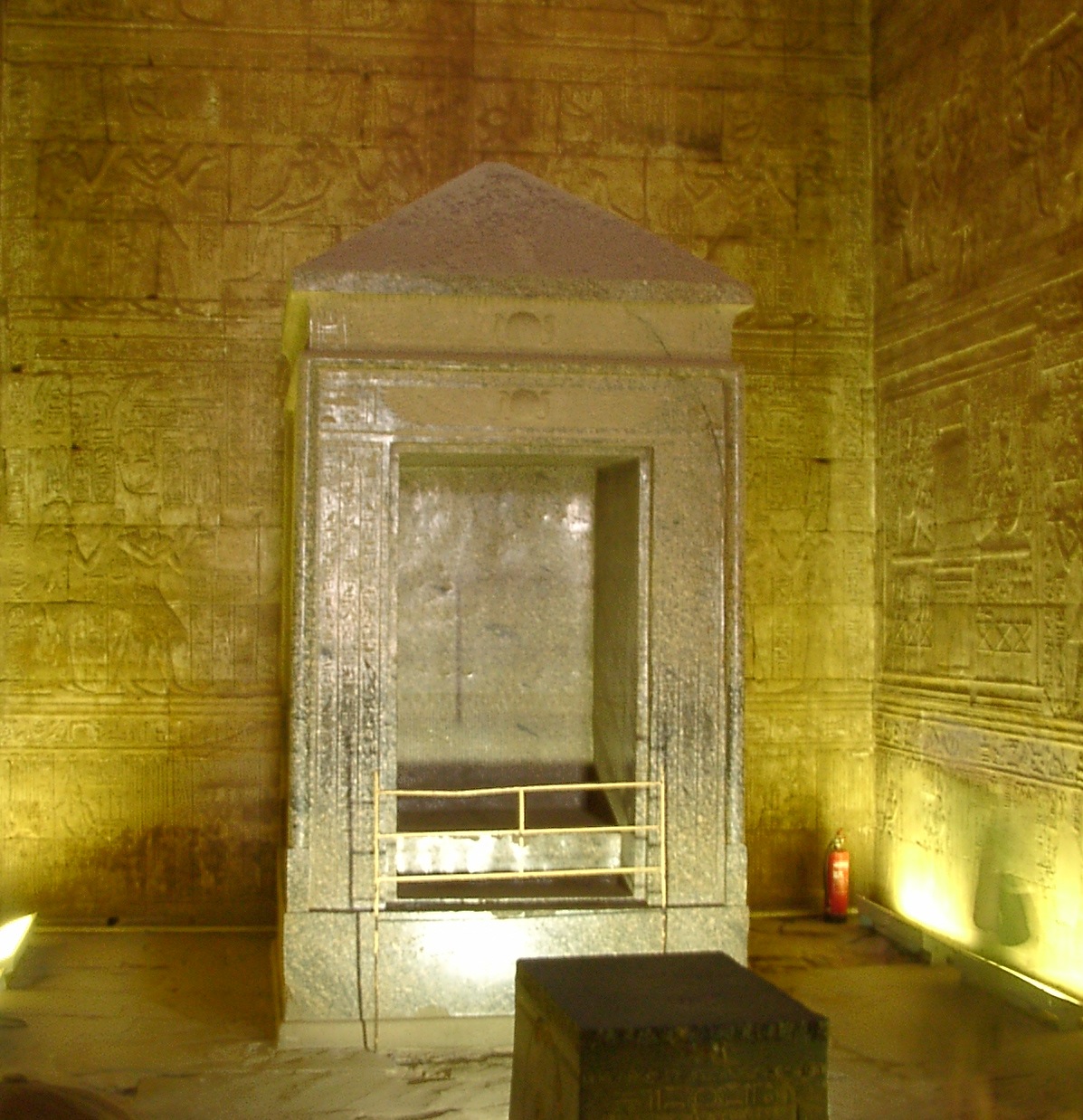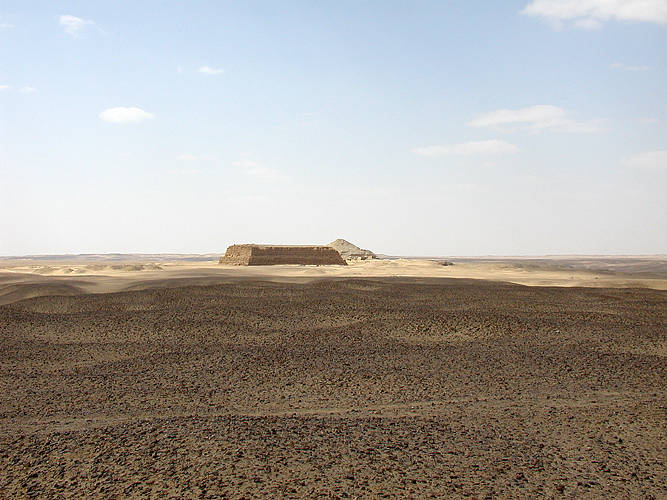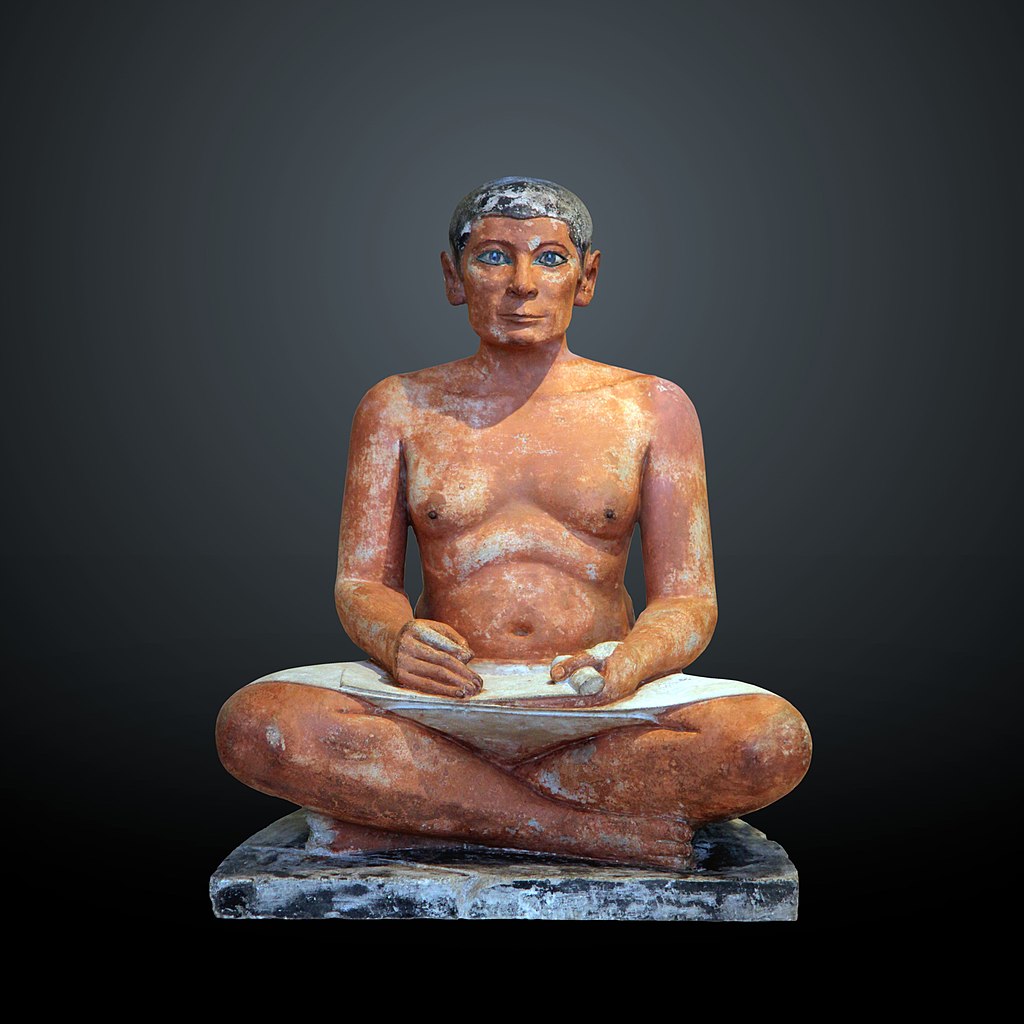1. AN ANCIENT RIVER CIVILIZATION.
1, 1 The Nile.
Life in Ancient Egpyt was possible thanks to the waters of the Nile.The source of the Nile is in Equatorial Africa, and runs through a narrow valley and flows into the Mediterranean Sea. We can divide the Nile in two natural regions:
- The Upper Egpyt, the valley.
- The Lower Egpyt, the delta.
1. 2. The origins of the egpyptian civilization.
Around 5.000 B. C., the neolithic settlements along the Nile river learnt how to predict tha nnual river flooding. They:- undertook drainage works.
- built irrigation channels
- learnt to use slit as natural fertiliser.
In 3.100 B. C., the legendary king Nemes unified the territories of Lower and Upper Egypt.
1. 3. The historical periods.
We can divide the history of Ancient Egypt into several periods separates by intermediate periods of decline:- Old kingdom (3.100-2181 B. C. ). The capital was Memphis and they built the pyramids.
- Middle kingdom (2.055-1.795 B.C.). The capital was Thebes and Nubia was conquered.
- New kingdom (1.550-1.069 B. C. ). They conquered Syria and Palestina. Egypt was ruled by famous pharaophs such as: Akhenaton, Tuthankamon and Ramses II.
- Late period (715-31 B.C.) Egpyt was conquered foreing peoples such as the assyrians, the persians and the greeks.
 |
| Geography of Egypt. |
The Nile river.
Ancient Egpyt geography.
Another video about the geography of Ancient Egypt.
The Nile river.
The major regions of Egypt.
2. Social and political organisation.
2. 1. Political organistaion of society.
The egyptian king was called pharaoph. He was considered a living god, the early encarnation of Horus, the god of sky and had political, military and religious powers:- As a king he:
- made laws
- inspected hydraulic works.
- owned most of the land of Egypt.
- controlled the collecting of taxes.
- As military leader led the army.
- As religious leader he ordered the construction of temples to worship the gods.
He had several attributes that symbolized his powers:
- The two crowns:
- The white crown of the Upper Egpyt.
- The red crown of the Lower Egypt.
- The crook and the flail:
- The crook, which symbolized the power of the pharaoph over his subjects.
- The flail, which symbolized his duty to destroy the enemies of Egpyt.
- The false beard, a symbol of inmortality.
- The uareus, a symbol of the protection of the gods.
2. 2. A very hierarchical society.
The egyptian society was divided into several groups:- The upper strata included the pharaoph, the pharaoph's family, the nobility and the priests. They owned most of the lands:
- The nobility controlled most of senior roles in the administration and the army.
- The priests were in charge of worshiping the gods and manage the lands of the temples.
- The intermediate strata included:
- wealthy merchants
- specialised artisans
- scribes, people that knew how to read and write. They carried out roles in temples and palaces.
- The lower strata that included free people:
- peasants that worked for the nobles or the temples.
- small-scale merchants.
- artisans
- soldiers.
3. The egyptian economy.
3. 1. Irrigation-based agriculture.
The main economic activity was irrigation-based agriculture. There were three seasons:- Sowing (october to january). The water level dropped and the peasants sowed the fields with seeds.
- Harvest (february to may).The crops were harvested with wooden scythes during the dry season.
- Flooding (june to september). The water level rise and the banks of the river were flooded.
- The main crops were wheat and barley that were used to make bread and beer. Other crops were linen, papyrus, olives and fruit trees.
- The lands were a property of the pharaoph and were worked by the peasanst who had to pay tributes. Also they had to work building dykes, canals, temples and pyramids.
3. 2. Other economic activities.
Livestock farming: cows, donkeys, sheeps and poultry (in spanish aves de corral).There were many artisans in the cities: stonemasons, carpenters, potters, weavers, etc.
Agriculture and seasons.
Domesticated animals.
4. Daily life.
4. 1. Egyptian dress.
We know what the Egyptians wore from the remains found in tombs or from reliefs and paintings, but most of them represented the pharaoph and the nobility.
- Upper class men wore a wrap-around skirt that reached the knees and was fastened at the waist. Whereas workers wore a linen loincloth
- Women wore a long tigh-fitting tunic that reached down to their ankles.
4. 2. Dwellings.
Egyptian houses were built of adobe walls made with clay from the Nile.The roof was made of palm tree trunks tied together and bound together with a layer of clay. The roof was used for storage puroposes and for slepping on hot nights:
- The poorest houses had only one floor and little forniture.
- The houses belonging to the nobilty had two floors, rooms for servants and gardens woth palm trees and ponds. vivían en viviendas de dos plantas con habitaciones para los criados.
Ancient Egypt's medicine.
The egyptian household.
Fashion of Ancient Egypt.
5. Egyptian religion.
5. 1. The Egyptian gods.
The main characteristics of the egyptian religion were:- It was polytheistic religion: they believed in many gods.
- Gods were represented with human and animal features.
- A number of animals were considered to be sacred such as scarab bettles, cats, cows and cocodriles.
- They use amulets to evade evil spirits
- The main gods were:
- Amun-Ra, the Sun god.
- Horus, god of the sky.
- Anubis god of mummyfication.
- Hathor, goddess of love.
- Isis, wife of Osiris and goddes of fertility.
- Osiris, god of the dead.
5. 2. Judgment of Osiris.
Egyptians believed in life after death. In order to obtain it, the decesaded has to pass the Judgment of Osiris. The heart of the deceased was placed in one side of a set of the scales an in the other the feather of the goddes Maat who simbolised justice. If the person was free of guilt the heart would weight less than the feather and the deceased would be rewarded with eternal life, but if the heart would weight more than the feather he would be devoured by a demon (Ammit).The Book of the Dead was a set of formulas to assist the decesased on the journey to the afterlife.
The myth of Osiris.
Mummification.
How to make a mummy.
The book of the dead.
6. The cultural and artistic legacy.
6. 1. The hieroglyphic script.
Writing language appeared in Egypt in 3.250 B. C.They used a hieroglyphic script with the following characteristics:
- It used drawings to express sounds, words or ideas (pictograms).
- Was used for officials or religious texts.
- Usually inscribed on stone or painted in walls.
- A symplified version (hieratic) was used for writing on papyrus, fabric or wood.
6. 2. Architecture.
The main characteristics were:- Buildings were made of stone.
- Had flat roofs supported by a lintel and columns
- Buildings were decorated with murals and sculptures.
- The main types of buildings were temples and tombs.
- Avenue of the Sphinxes, where ceremonial processions entered the temple.
- pylon, a huge wall located at the sides of the main entrance.
- the courtyard, an open space surrounded by columns.
- hypostyle hall, a covered space with columns in which the people couldn't enter.
- the sanctuary, where the statue of the god was kept in the dark.
Tombs were built to ensure the eternal rest of the pharaophs, their families and other privileged groups. Tombs were decorated with scenes from everyday life and the Book of the Dead. Also funerray objects were placed in the tombs.
We can distinguish several types of tombs:
- First, they built mastabas, simple, low rectangular structures with an underground burial chamber.
- Later, they started to build pyramids, colossal structures with a rectangular base. Apart from the pharaoph's burial chamber, contained several false burial chambers and
- Finally, they built hypogea
Sculpture.
The main characteristics of the egyptian sculpture were:- Were made in stone.
- Included statues and reliefs.
- They represented:
- idealised pharaophs and gods on a large scale.
- nobles and scribes in a more natural manner and a smaller scale.
Painting.
- Were used to decorate the walls of the temples and the interior of temples.
- Frontalism: In paintings and reliefs, faces were shown in profile with the torso facing forward.
- More important figures were larger than other figures.
 |
| File:Egyptian_Hieroglyphic_Alphabet_001.jpg Autor: User:لا_روسا&redirect=no License: CC BY-SA 4.0) |
.jpg) |
| Avenue of sphinx, temple of Karnak. |
 |
| Pylon of the Edfu Temple. |
| Courtyard, temple of Edfu. File: GD-EG-Efou022.JPG User: Nefermaat. (CC BY-SA 2.5) |
 |
| Hypostyle hall, temple of Edfu. File: Edfu Temple 032010 29.jpg User: MatthiasKabel (CC BY-SA 3.0) |
 |
| Sanctuary, temple of Edfu. File:Edfu naos.jpg User:HoremWeb (CC BY-SA 4.0) |
 | ||||
| Mastaba of Shepseskaf. File:Mastaba-faraoun-1.jpg |
| Gyza pyramid cmplex, from left to right: Khufu's pyramid (in spanish, Keops), Khafre's pyramid (in spanish, Kefren) and Menkaure's pyramid (in spanish, Micerinos). |
 |
| Originally, the sides of the pyramids were completely smooth, because them were covered with slabs of polished stone. |
 |
| An example of hypogea, the funerary temple of Hatshesup. |
 |
| The interior of the tomb of Taousertet and Sethnakht in the Valley of the kings. |
 |
| Sculptures of Ramesses II in the temple of Abu Simbel. |
 |
| Frontalismo: el cuerpo y la cabeza se representa de perfil mientras que los hombros y los ojos aparecen representados de frente. |
Spoken ancient Egpyt (numbers, gods and hieroglyphs).
The Rosetta Stone.
Hieroglyphs.
Temples of rituals
The pyramid of Djoser.
The great pyramid of Gizah.
Inside the Great Pyramid of Giza.
Inside the Great Pyramid of Giza







No hay comentarios:
Publicar un comentario